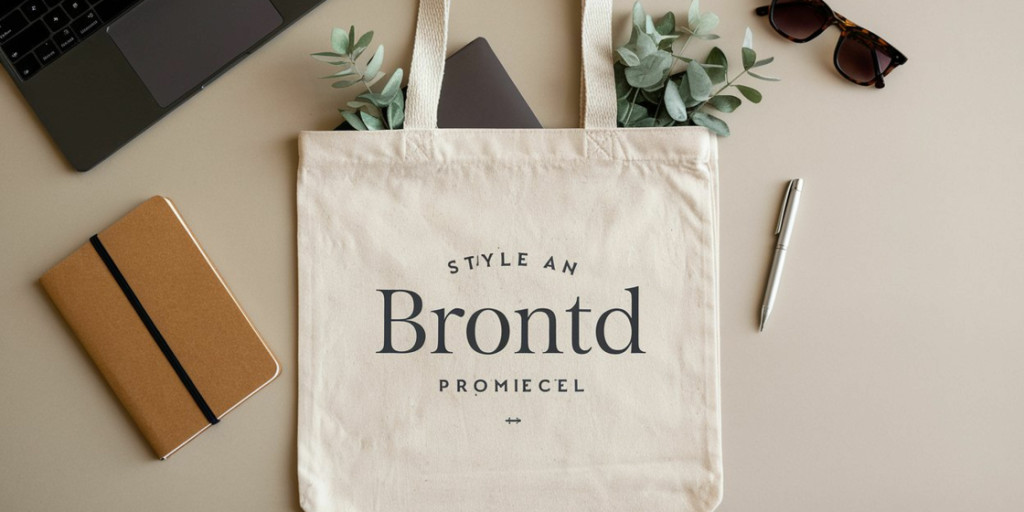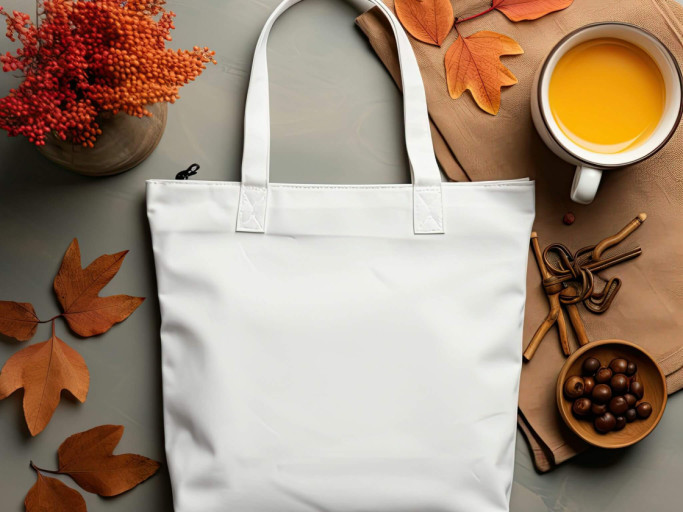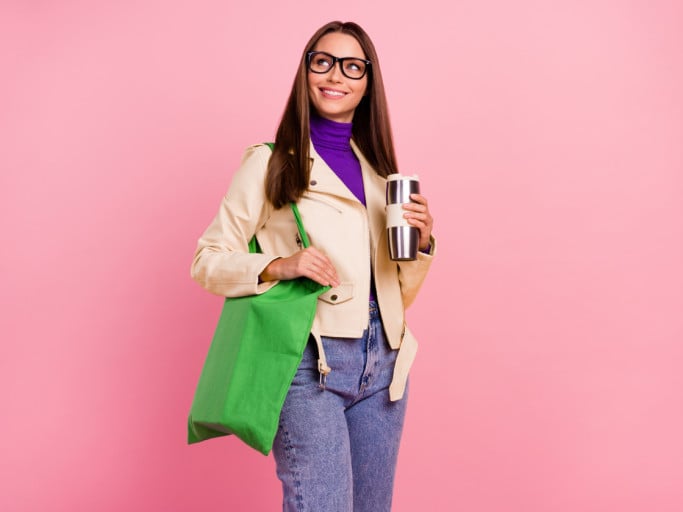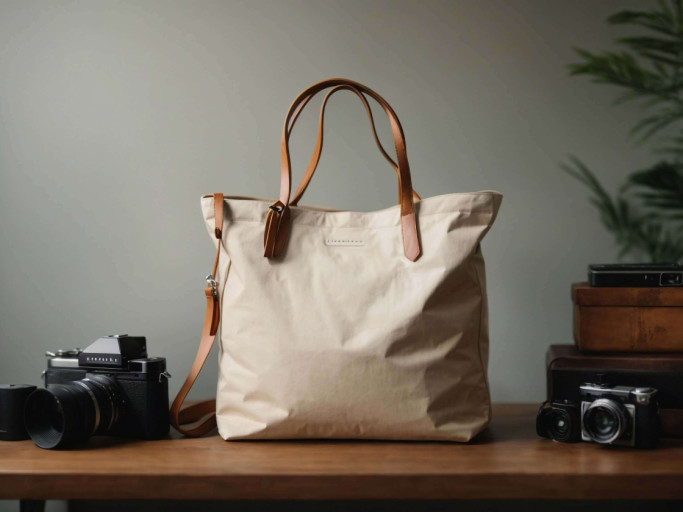How to Design a Company Tote Bag That Customers Actually Want to Carry
Date posted: 15th April 2025 in Bags
Last updated: 15th April 2025

Tote bags have become ubiquitous. They're eco-friendly, practical, and a fantastic way for your brand to gain exposure. But let's face it: not all tote bags are created equal. To make a lasting impression and ensure your company's tote bag becomes a cherished accessory rather than another forgotten item, it needs to be well-designed and desirable.
At EverythingBranded, a leading supplier of branded merchandise in the USA, we understand the power of promotional products. With over 100,000 customizable options, we know what makes a promotional item a hit. Here's your guide to designing a company tote bag that customers will be excited to carry around.
1. Define Your Audience and Purpose
Before diving into design, consider who will be using the tote bag and how they'll use it.
- Demographics: Are you targeting students, professionals, or a broader demographic?
- Lifestyle: What are their daily activities? Do they need a bag for groceries, books, gym clothes, or work essentials?
- Purpose: Is the tote bag a giveaway at a conference, a gift with purchase, or an item for sale?
Understanding your audience and the bag's intended purpose will drive your design decisions.
2. Choose the Right Material
The material of your tote bag significantly impacts its durability, look, and feel. Here are some popular options:
- Cotton Canvas: A classic choice, cotton canvas is durable, affordable, and printable. It's suitable for everyday use and can handle moderate weight.
- Organic Cotton: An eco-friendly alternative to regular cotton, organic cotton is grown without harmful pesticides and chemicals.
- Jute: A natural fiber known for its strength and rustic appearance. Jute bags are ideal for environmentally conscious brands.
- Polyester: A synthetic material that is water-resistant and easy to clean. Polyester tote bags are great for outdoor activities and grocery shopping.
- Non-Woven Polypropylene: A budget-friendly option that is lightweight and recyclable. These bags are perfect for giveaways and promotional events.
3. Focus on a Functional Design
Aesthetics matter, but functionality is key to ensuring your tote bag gets used. Consider these design elements:
- Size and Shape: Choose a size that accommodates your target audience's needs. A larger tote is great for groceries or books, while a smaller one is suitable for carrying essentials.
- Handles: Opt for comfortable handles that are long enough to carry the bag on the shoulder. Reinforced stitching ensures durability.
- Pockets: Adding interior or exterior pockets increases the bag's utility. Pockets can hold water bottles, phones, keys, and other small items.
- Closure: Consider adding a zipper, button, or snap closure to keep the bag's contents secure.
- Bottom Gusset: A flat bottom gusset allows the bag to stand upright, making it easier to load and unload items.
4. Create an Appealing Visual Design
Your tote bag is a walking billboard for your brand, so its visual design is crucial.
- Logo Placement: Strategically place your logo where it's visible but not overwhelming. Consider the size, color, and orientation of your logo.
- Color Palette: Choose colors that align with your brand identity and appeal to your target audience.
- Graphics and Illustrations: Use eye-catching graphics or illustrations that reflect your brand's personality and message.
- Typography: Select a font that is legible and complements your overall design. A well-chosen quote or slogan can add a personal touch.
- Minimalism: Sometimes, less is more. A clean and simple design can be more effective than a cluttered one.
5. Ensure High-Quality Printing
The quality of the printing can make or break your tote bag's design.
- Screen Printing: A popular and cost-effective method for printing on cotton and canvas. It produces vibrant, long-lasting results.
- Dye Sublimation: Ideal for printing complex designs and full-color images on polyester. The ink is infused into the fabric, creating a durable and vibrant print.
- Heat Transfer: A versatile method for printing on various materials. Heat transfer is suitable for small quantities and intricate designs.
- Embroidery: Adds a touch of sophistication and texture to your tote bag. Embroidery is perfect for logos and small designs.
6. Consider Eco-Friendly Options
In today's environmentally conscious world, sustainable choices can enhance your brand's image.
- Sustainable Materials: Opt for organic cotton, recycled materials, or biodegradable options.
- Eco-Friendly Inks: Use water-based or soy-based inks that are free from harmful chemicals.
- Ethical Production: Partner with suppliers who prioritize fair labor practices and environmental responsibility.
7. Test and Refine Your Design
Before placing a large order, create a prototype and gather feedback.
- Test the Design: Carry the tote bag yourself or give it to a few trusted customers to test its functionality and durability.
- Gather Feedback: Ask for opinions on the bag's design, size, material, and overall appeal.
- Refine Your Design: Use the feedback to make improvements and ensure the final product meets your expectations.
8. Partner with a Trusted Supplier
Choosing the right supplier is essential for producing high-quality tote bags that meet your specifications.
- Experience: Look for a supplier with years of experience in the promotional products industry.
- Product Range: Choose a supplier that offers a wide variety of tote bag styles, materials, and printing options.
- Quality Control: Ensure the supplier has rigorous quality control processes to prevent defects and ensure consistency.
- Customer Service: Partner with a supplier that provides excellent customer service and support throughout the entire process.
At EverythingBranded, we pride ourselves on our commitment to quality, innovation, and customer satisfaction. Whether you need promotional pens, mugs, bags, or any other custom products, our team is here to help you elevate your brand and make a lasting impression. Contact us today to discuss your project and discover how we can bring your vision to life.

Strengthen your brand perception with promotional products
Chat online or call us today on 1800-586-1615
More Articles

From Canvas to Organic Cotton: Exploring Fabric Choices for Custom Tote Bags
25th October 2023 in Eco-Friendly

College Swag and Beyond: How Educational Institutions Harness the Power of Custom Tote Bags
1st August 2023 in Eco-Friendly

How to Design a Company Tote Bag That Customers Actually Want to Carry
15th April 2025 in Bags

Our Top 10 Custom Tote Bags with Zippers
1st October 2023 in Bags

